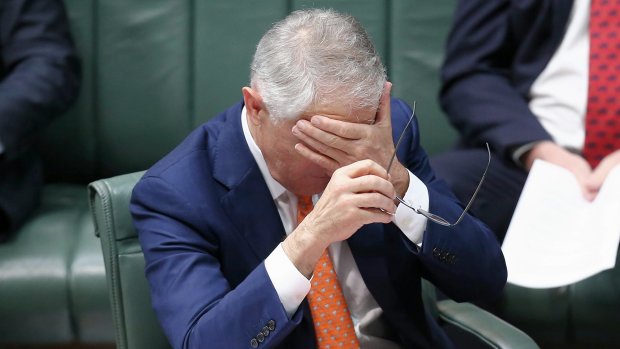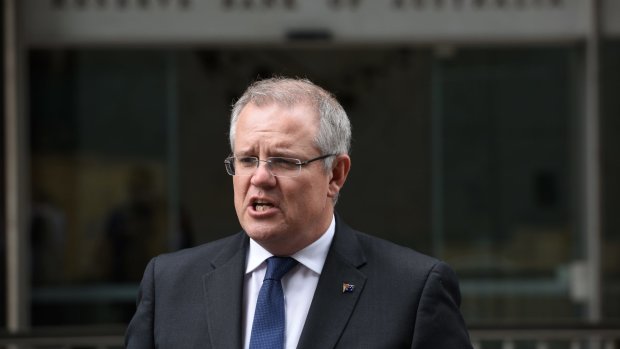It is no foregone conclusion that simply giving government more power and money will fix income inequality.
 Adam Smith once wryly said "there is a great deal of ruin in a nation", and many would argue this statement is aptly represented in the re-emergence of an anti-immigration, anti-trade populism mainly on the right, but also from the far left, in many countries.
Adam Smith once wryly said "there is a great deal of ruin in a nation", and many would argue this statement is aptly represented in the re-emergence of an anti-immigration, anti-trade populism mainly on the right, but also from the far left, in many countries.
The Swedish think tank Timbro recently released a study showing authoritarian populism well and truly on the rise in European politics, but this trend is also evident in the US (Donald Trump) and Australia (Pauline Hanson).
There are many economic, political and social factors that could be used to explain the increasing voting shares captured by these groups, but for some commentators the answer seems pretty clear-cut already.
The issue, apparently, is that growing inequality of incomes and wealth between the rich and the poor has been driven, almost wholly and solely, by a dreaded neo-liberal "Washington Consensus" seeking to fiscally starve the state and to lift trade barriers.
Inequality-inducing neo-liberalism, it is alleged, foments political resentment among the less well-off, leaving such disaffected people to be lured by politicians somehow offering a better way through rebuilding walls and retooling "picking winners" industry policy.
The Labor-aligned think tank Chifley Research Centre released a report promulgating this kind of narrative, suggesting the best way to beat Hansonism at home is to upend inequality.
Much of the current discussion about economic inequality rests on movements in the measure of income concentration, known as the Gini coefficient, within any given society, with higher values of Gini implying that income is being earned by relatively fewer people.
There have been some recent empirical works, published by the likes of the OECD and the IMF, which claim that there is a negative correlation between inequality, as measured by the Gini, and economic growth.
The studies received much fanfare as of late, and have been approvingly cited by Chifley including in background consultancy studies it has commissioned.
However the studies do not present a definitive case about the relationship between inequality and growth, let alone the kinds of policy prescriptions needed to suppress income dispersion.
Indeed, the methodological underpinnings and policy conclusions have been contested on several grounds — for example, Eric Crampton of the New Zealand Initiative pointed out a few problems with Federico Cingano's OECD paper late last year.
As for the Jonathan Ostry IMF study, which no doubt influenced Chifley's positions concerning the economic implications of income inequality, it shows that a degree of government redistribution above a certain threshold is detrimental to growth.
Australia's social welfare state is lauded by many as reasonably well-targeted, but Ostry and his IMF colleagues estimated us to be close to the critical threshold whereby any further redistribution would be associated with falling growth rates.
Despite its popularity by inequality economists there is a more fundamental question as to whether the Gini coefficient itself represents the most useful measurement of inequality in the first place.
Some economists have been critical of the predominating usage of Gini during the contemporary inequality debate given the numerous limitations of the measure, say, in relation to the treatment of non-cash benefits and how demographic changes affect the coefficient results.
The Gini coefficient provides low informational content in that it is difficult to infer to what extent the measured inequality is wrought by beneficial changes, such as improved productivity or market-tested entrepreneurship, or by malign changes such as economic cronyism and corruption.
And the Gini cannot appropriately account for the degree and breadth of changes in economic and social opportunities, nor the mass improvements in living standards enjoyed over the past few decades and even longer.
Indeed, classical liberals have stressed that relative income changes, as reflected in movements in the Gini coefficient over time, do not necessarily provide the insight needed to establish whether economic conditions have improved on a broad scale.
In her critical review of Thomas Piketty's work, economic historian Deirdre McCloskey argues that the size of Gini is "irrelevant to the noble and ethically relevant purpose of raising the poor to a condition of dignity".
Elsewhere, McCloskey refuted the notion the poor are getting poorer: "Millions more have gas heating, cars, smallpox vaccinations, indoor plumbing, cheap travel, rights for women, lower child mortality, adequate nutrition, taller bodies, doubled life expectancy, schooling for their kids, newspapers, a vote, a shot at university, and respect."
The redistributive approach pursued by Chifley appears grounded, to some extent, upon an economic view that diminishing marginal utility of income implies that poorer people value an extra dollar in their hand far more than a wealthy person already in possession of many dollars.
But a key dilemma is that forcibly redistributing incomes, or other rewards emanating from the production process, could potentially reduce the available total bounty (including resources that could be redistributed) in future.
As philosopher David Schmidtz described it in his book The Elements of Justice, "the society takes seed corn out of production and diverts it to current consumption, thereby cannibalising itself".
Now, there should always be some place in civil society for charitable contributions to the needy, and influential liberals like Milton Friedman and Friedrich Hayek agree a lean, efficient public sector "safety net" should complement charity.
But there always is a question of balance here, and it isn't a foregone conclusion that politicians have the knowledge and incentive to ensure the welfare state is always well proportioned with the market-based economy.
An aggressive redistributive agenda, perhaps to greatly reduce the Gini coefficient, could threaten opportunities for productive economic advancement, which could have a particularly injurious effect upon the poor who most urgently need chances to improve their situations.
And expanding the public sector in such circumstances would give a certain class of people more political power to non-consensually transfer resources from politically unfavoured constituencies to the politically favoured, potentially treating the former group in unjust ways.
One could agree with the likes of the Chifley Research Centre that lots of people seem politically disaffected right now, an unsurprising outcome in this low-growth, high-cost economy at the present.
But giving government an opportunity to star in its own "Super Size Me" policy experiment is unlikely to fix inequality, nor placate those whose political preferences gravitate toward extremist parties.

 Adam Smith once wryly said "there is a great deal of ruin in a nation", and many would argue this statement is aptly represented in the re-emergence of an anti-immigration, anti-trade populism mainly on the right, but also from the far left, in many countries.
Adam Smith once wryly said "there is a great deal of ruin in a nation", and many would argue this statement is aptly represented in the re-emergence of an anti-immigration, anti-trade populism mainly on the right, but also from the far left, in many countries. Tony Abbott last week advocated such a ban: "We need to look long and hard at restricting donations to real people on the electoral roll. To that end, there should be no union donations, company donations or foreign donations."
Tony Abbott last week advocated such a ban: "We need to look long and hard at restricting donations to real people on the electoral roll. To that end, there should be no union donations, company donations or foreign donations." When the government used the May budget to shred its promise not to increase taxes on superannuation, it did not consult the public on its proposal. At least they're having a consultation this time. But the consultation will go for nine days. That's correct. The public get nine days from when the draft legislation was unveiled (7 September) to the date consultations close (16 September) to make submissions on the future of an industry with more than $2 trillion in assets.
When the government used the May budget to shred its promise not to increase taxes on superannuation, it did not consult the public on its proposal. At least they're having a consultation this time. But the consultation will go for nine days. That's correct. The public get nine days from when the draft legislation was unveiled (7 September) to the date consultations close (16 September) to make submissions on the future of an industry with more than $2 trillion in assets. Richard Berry revolutionised the teaching of anatomy in Melbourne. He wrote the standard anatomy textbook used by students for some twenty-five years. As dean of medicine he advocated for the placement of a hospital near campus that could work closely with the university, a dream that became a reality after his departure. Berry's contributions to teaching, as well as an administrator, were so outstanding that when a new anatomy building opened, which he designed, it was only natural to name the building after him.
Richard Berry revolutionised the teaching of anatomy in Melbourne. He wrote the standard anatomy textbook used by students for some twenty-five years. As dean of medicine he advocated for the placement of a hospital near campus that could work closely with the university, a dream that became a reality after his departure. Berry's contributions to teaching, as well as an administrator, were so outstanding that when a new anatomy building opened, which he designed, it was only natural to name the building after him. Berry (right) researched the relationship between skull sizes and intelligence, collecting a large number of human skulls for research. He also advocated for sterilisation of Aboriginals, people with a disability, and other groups he viewed as inferior. Student union president Tyson Holloway-Clarke says the existence of a building named after him is "confronting and alienating situation for Indigenous students".
Berry (right) researched the relationship between skull sizes and intelligence, collecting a large number of human skulls for research. He also advocated for sterilisation of Aboriginals, people with a disability, and other groups he viewed as inferior. Student union president Tyson Holloway-Clarke says the existence of a building named after him is "confronting and alienating situation for Indigenous students". Target's crime of political correctness was to sell a T-shirt. A pink T-shirt for girls. The t-shirt read, "Batgirl to-do list: Dryclean cape, wash batmobile, fight crime, save the world".
Target's crime of political correctness was to sell a T-shirt. A pink T-shirt for girls. The t-shirt read, "Batgirl to-do list: Dryclean cape, wash batmobile, fight crime, save the world". Given these chaotic days of unorthodox monetary policy practice, such as ultra-low interest rates and quantitative easing, talk about reforming the way central banks manage the monetary system is seemingly at an all-time high.
Given these chaotic days of unorthodox monetary policy practice, such as ultra-low interest rates and quantitative easing, talk about reforming the way central banks manage the monetary system is seemingly at an all-time high.